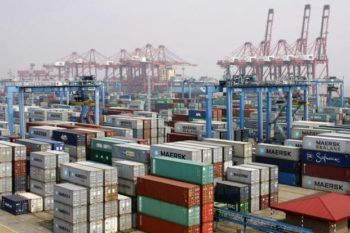
By receiving four more ratifications for the Trade Facilitation Agreement (TFA), the World Trade Organisation (WTO) has obtained the two-thirds acceptance of the agreement from its 164 members needed to bring the TFA into force.
Indeed, the action brings a major milestone for the global trading system as the first multilateral deal was concluded in the 21 year history of the WTO entered into force.
The Federal Government had ratified the Trade Facilitation Agreement making it the 107th World Trade Organisation member to do so.
Yesterday, Rwanda, Oman, Chad and Jordan submitted their instruments of acceptance to WTO Director-General Roberto Azevêdo, bringing the total number of ratifications over the required threshold of 110.
The entry into force of this agreement, which seeks to expedite the movement, release and clearance of goods across borders, launches a new phase for trade facilitation reforms all over the world and creates a significant boost for commerce and the multilateral trading system as a whole.
Full implementation of the TFA is forecast to slash members’ trade costs by an average of 14.3 per cent, with developing countries having the most to gain, according to a 2015 study carried out by WTO economists.
The TFA is also likely to reduce the time needed to import goods by over a day and a half and to export goods by almost two days, representing a reduction of 47 per cent and 91 per cent respectively over the current average.
Implementing the TFA is also expected to help new firms export for the first time. Moreover, once the TFA is fully implemented, developing countries are predicted to increase the number of new products exported by as much as 20 per cent, with least developed countries (LDCs) likely to see an increase of up to 35 per cent, according to the WTO study.
WTO boss, Azevêdo welcomed the TFA’s entry into force, noting that the Agreement represents a landmark for trade reform.
He said: “This is fantastic news for at least two reasons. First, it shows members’ commitment to the multilateral trading system and that they are following through on the promises made in Bali. Second, it means we can now start implementing the Agreement, helping to cut trade costs around the world. It also means we can kick start technical assistance work to help poorer countries with implementation.
“This would boost global trade by up to $1 trillion each year, with the biggest gains being felt in the poorest countries. The impact will be bigger than the elimination of all existing tariffs around the world.
“But this is not the end of the road. The real work is just beginning. This is the biggest reform of global trade in a generation. It can make a big difference for growth and development around the world. Now, working together, we have the responsibility to implement the Agreement to make those benefits a reality.”
The Agreement is unique in that it allows developing and least-developed countries to set their own timetables for implementing the TFA depending on their capacities to do so. A Trade Facilitation Agreement Facility (TFAF) was created at the request of developing and least-developed countries to help ensure they receive the assistance needed to reap the full benefits of the TFA and to support the ultimate goal of full implementation of the new agreement by all members.